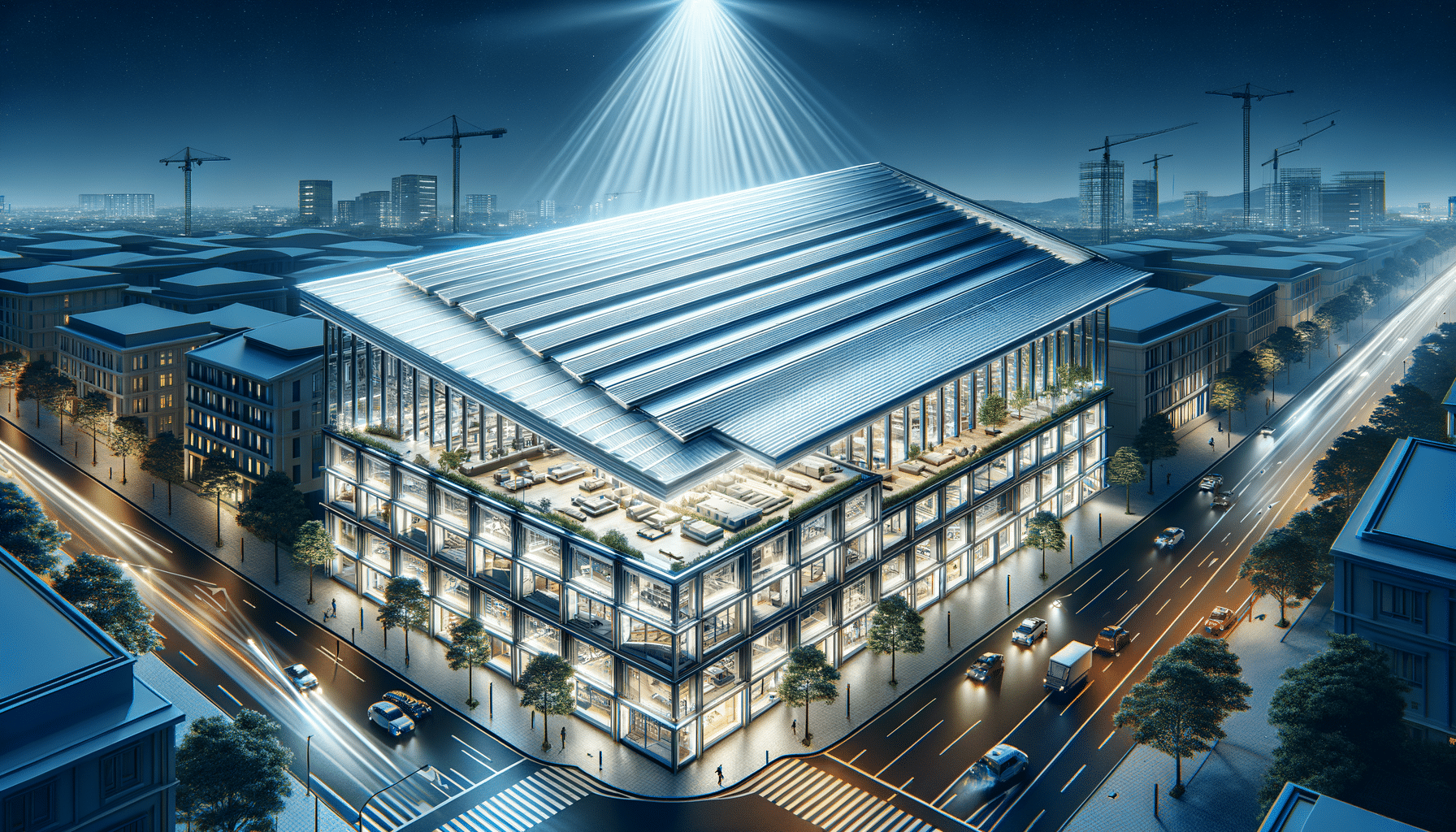Sandwich Panels – An Innovative Roofing Option Gaining Traction
While the majority opt for traditional shingles, a new wave of homeowners is turning to a more robust, lightweight, and rapidly-installable option that is catching attention.

Understanding Sandwich Panels
Sandwich panels are an innovative construction material that consists of two outer layers and an insulating core. This design not only provides structural strength but also enhances thermal insulation, making them an exceptional choice for roofing solutions. The outer layers are typically made from metal, such as aluminum or steel, which are known for their durability and resistance to environmental factors. The core is often composed of materials like polyurethane, polystyrene, or mineral wool, each offering unique benefits in terms of insulation and fire resistance.
These panels are gaining popularity due to their versatility and efficiency. They are suitable for a variety of applications, from residential homes to commercial buildings and industrial facilities. One of the key advantages of sandwich panels is their lightweight nature, which simplifies transportation and installation. This characteristic makes them particularly appealing for projects with tight deadlines or limited access to heavy machinery.
Moreover, sandwich panels are known for their aesthetic appeal. They come in a range of finishes and colors, allowing architects and builders to achieve the desired look without compromising on performance. This combination of functionality and design flexibility is driving the rising trend of sandwich panels in roofing solutions.
Advantages of Sandwich Panels in Roofing
The advantages of using sandwich panels for roofing are numerous and significant. Firstly, they offer excellent thermal insulation, which is crucial for maintaining energy efficiency in buildings. This can lead to substantial savings on heating and cooling costs, benefiting both homeowners and businesses.
Another notable advantage is their durability. The robust construction of sandwich panels ensures a long lifespan, reducing the need for frequent repairs or replacements. This durability is further enhanced by their resistance to environmental factors such as moisture, UV radiation, and extreme temperatures.
Additionally, sandwich panels contribute to noise reduction, creating a more comfortable indoor environment. This is particularly beneficial in urban areas or locations near busy roads where noise pollution can be a concern.
- Thermal insulation for energy efficiency
- Durability and low maintenance
- Noise reduction capabilities
These advantages make sandwich panels a compelling choice for modern roofing solutions, catering to the demands of sustainability and functionality.
Comparing Sandwich Panels with Traditional Roofing Materials
When comparing sandwich panels to traditional roofing materials such as asphalt shingles or tiles, several differences become apparent. Traditional materials often require more time and labor for installation, which can increase the overall cost of a project. In contrast, sandwich panels are designed for quick and easy installation, reducing labor costs and project timelines.
Traditional roofing materials may also lack the same level of insulation and durability offered by sandwich panels. For instance, asphalt shingles are prone to damage from severe weather conditions and may require more frequent maintenance. On the other hand, sandwich panels provide a robust and long-lasting solution that can withstand harsh environmental conditions.
Furthermore, the aesthetic options available with sandwich panels allow for greater creativity in architectural design, compared to the more limited choices with traditional materials. This flexibility in design, combined with their superior performance, positions sandwich panels as a favorable alternative in the roofing industry.
- Quick installation compared to traditional materials
- Enhanced insulation and durability
- Greater design flexibility
Environmental and Economic Impact
Sandwich panels are not only beneficial from a performance standpoint but also have positive environmental and economic impacts. Their excellent insulation properties contribute to energy efficiency, reducing the carbon footprint of buildings. This aligns with the growing demand for sustainable construction practices and green building certifications.
Economically, the lightweight nature of sandwich panels translates to lower transportation costs and reduced structural support requirements. This can lead to significant savings in construction budgets, making them an attractive option for developers and builders.
Moreover, the long lifespan of sandwich panels means fewer resources are needed for maintenance and replacements, further enhancing their economic viability. As more industries and individuals recognize the importance of sustainability, sandwich panels are likely to become an integral part of future construction projects.
- Energy efficiency and reduced carbon footprint
- Lower transportation and construction costs
- Long-term economic benefits
Conclusion: The Future of Roofing with Sandwich Panels
As the construction industry continues to evolve, sandwich panels are emerging as a key player in modern roofing solutions. Their combination of strength, insulation, and design flexibility offers a compelling alternative to traditional materials. With increasing awareness of environmental sustainability and the need for cost-effective building solutions, sandwich panels are well-positioned to meet these demands.
Homeowners, builders, and architects are recognizing the value that sandwich panels bring to the table. As their popularity grows, we can expect to see more innovative applications and advancements in this technology, further solidifying their place in the future of roofing.
Embracing sandwich panels in roofing projects not only enhances the functionality and aesthetics of buildings but also supports a more sustainable and economically viable construction industry.